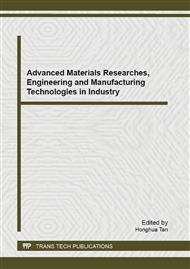[1]
C.A. Fletcher: Computational Techniquesfor Fluid Dynamics. Vol 2: Special Techniques for Differential Flow Categories, Berlin: Springer-Verlag, (1988), p.493.
Google Scholar
[2]
P.J. Roache: Computational Fluid Dynamics, Albuquerque, NM: Hermosa Publications, (1972), p.446.
Google Scholar
[3]
R. PeyretandD. Th. Taylor: Computational Methods for Fluid Flow. New York: Berlin: Springer-Verlag, (1983), p.358.
Google Scholar
[4]
N.N. Yanenko: The Method of Fractional Steps. New York: Springer-Verlag. In J.B. Bunchand D.J. Rose (eds. ), Space Matrix Computations, New York: Academics Press, (1979).
Google Scholar
[5]
M. Lesieur, O. MetaisandP. Comte: Large eddy simulation of turbulence. New York, Cambridge University Press, (2005), p.219.
Google Scholar
[6]
J.C. Tannehill, D.A. Anderson and R.H. Pletcher: Computational Fluid Mechanics and Heat Transfer. 2nd ed., New York: McGraw-Hill, (1997), p.816.
Google Scholar
[7]
A. Issakhov: Large eddy simulation of turbulent mixing by using 3D decomposition method Issue 4, J. Phys.: Conf. Ser. 318 042051, (2011).
DOI: 10.1088/1742-6596/318/4/042051
Google Scholar
[8]
B. Zhumagulov and A. Issakhov: Parallel implementation of numerical methods for solving turbulent flows. Vestnik NIA. (2012), - № 1(43), pp.12-24.
Google Scholar
[9]
A. Issakhov: Development of parallel algorithm for numerical solution of three-dimensional Poissonequation. Journal of Communication and Computer. Volume 9, Number 9, (2012), pp.977-980.
Google Scholar
[10]
A. Issakhov: Mathematical modelling of the influence of thermal power plant totheaquatic environment by using parallel technologies. AIP Conf. Proc. 1499, (2012), pp.15-18.
DOI: 10.1063/1.4768963
Google Scholar
[11]
A. Issakhov: Mathematical Modelling of the Influence of Thermal Power Plant on the Aquatic Environment with Different Meteorological Condition by Using Parallel Technologies. Power, Control and Optimization. Lecture Notes in Electrical Engineering Volume 239, (2013).
DOI: 10.1007/978-3-319-00206-4_11
Google Scholar


